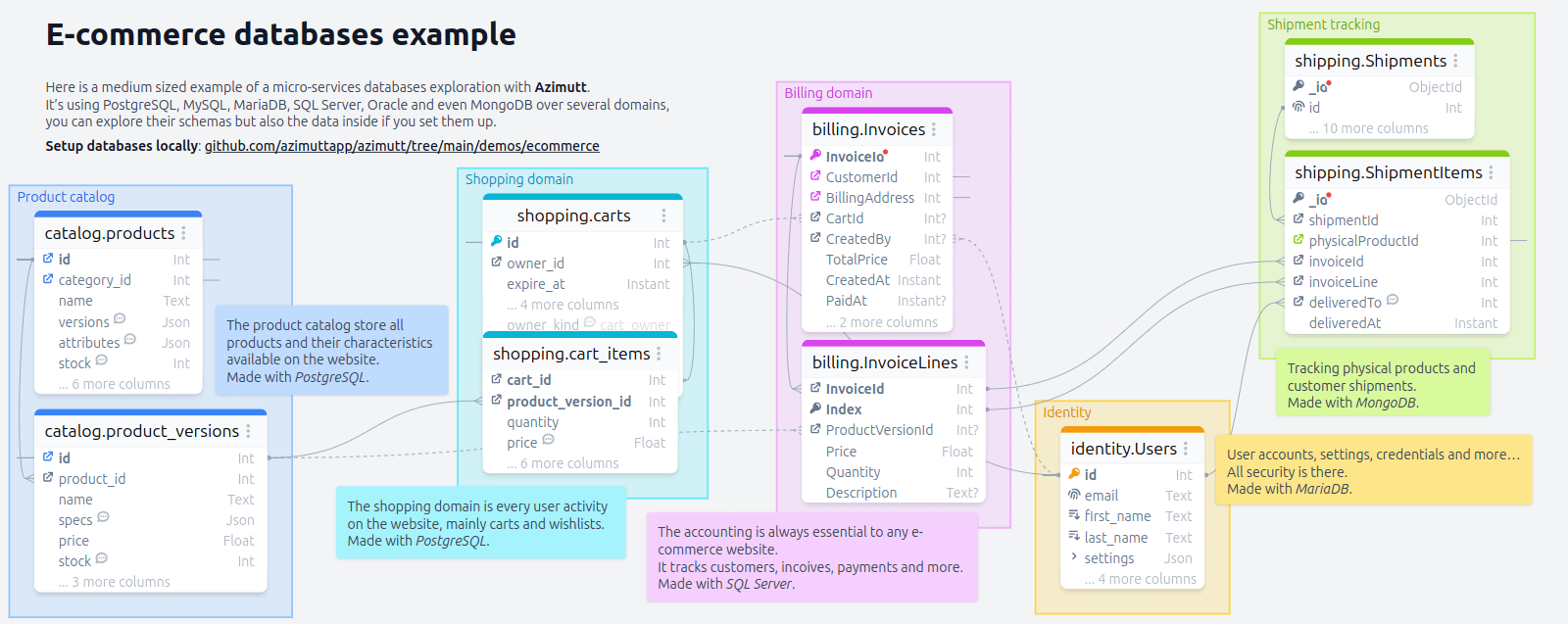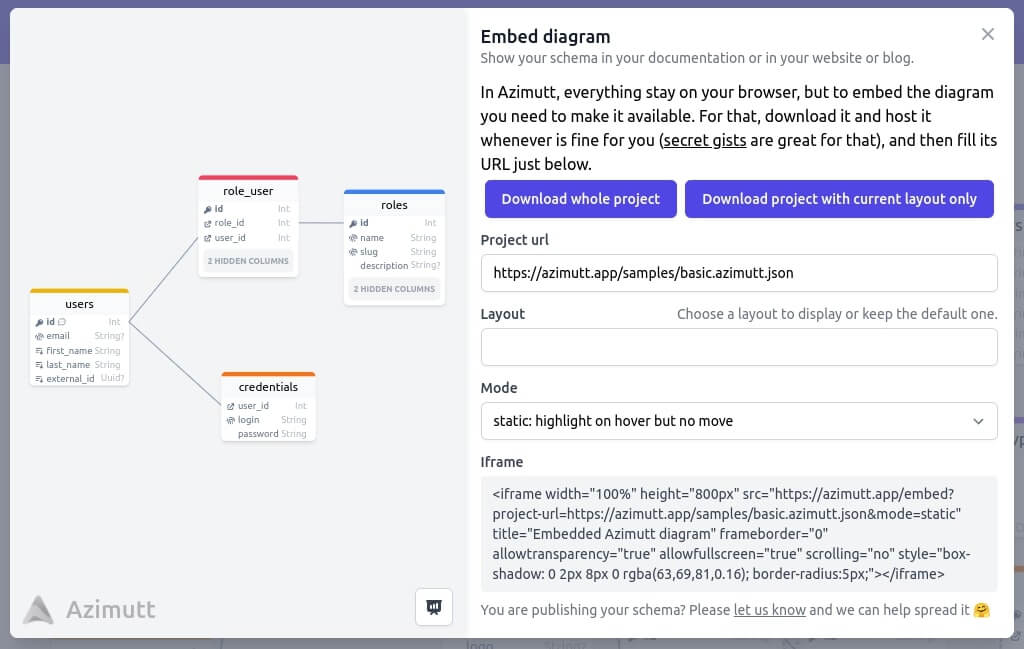testimonial
Azimutt Review: A Startup Founder’s Perspective
by Matthew, startup founder on
As the founder of my first SaaS startup, I’ve quickly learned the importance of choosing the right tools to support rapid development. Time is always in short supply, and every decision needs to count. That’s why I was relieved to find Azimutt, a tool that has seamlessly integrated into my workflow and helped me keep my project on track.

Initial Impressions
When I found Azimutt, I have to admit the name didn’t resonate with me - coming from the United States, it reminded me of “azimuth”, which created some confusion. But shortly thereafter I went from “Azi-what?” to “Azimutt, wohooo!”
The features seemed like a great blend of simplicity and power, which is exactly what I needed. As a first-time founder, I don’t have the luxury of time to deal with overly complicated tools, nor do I have the budget to spend on pricey software that doesn’t deliver tangible value.
The Struggle with Other Tools
Before Azimutt, I tested a range of database modeling tools, each with its own set of frustrations. SqlDBM had the capabilities I needed but came with a cost that was impossible to justify for an early-stage startup. Other tools like DbSchema had interfaces that were outdated and felt cumbersome to use. Luna Modeler showed promise but lacked a cloud version, which was a non-starter for me. Tools like Miro, Lucidchart and draw.io are good for basic diagrams but quickly become overwhelming when working with more complex models. DataGrip was overkill for my needs, and dbdiagram.io, while intriguing, was too limited with its text-only approach. Many other tools felt outdated or simply weren’t being actively maintained.
How Azimutt Fits into My Startup’s Workflow
Azimutt has become an essential tool for me, particularly when I’m brainstorming and designing new features. It allows me to work as quickly as I think, making real-time adjustments and visualizing potential solutions instantly. It’s the digital equivalent of a whiteboard - perfect for sketching out ideas and refining them on the fly - but with the depth needed to not just have to redo everything after the brainstorming session. You can even export to a variety of database languages, which has been very helpful. I also really appreciate the layout feature, which allows me to zoom in on specific parts of the database or take a broader view when needed.
Another critical use for Azimutt in my startup is documenting our evolving database. As we continue to build, having a clear, visual representation of our data model has been very important. Azimutt doesn’t just serve as documentation though; it actively supports the development process by making it easier to see relationships, spot potential issues, and better understand the why behind the what.

Why Azimutt Works for a Startup
What truly sets Azimutt apart is how intuitive it is. The AML syntax is straightforward and easy to learn, which made it feel natural and easy to get started, without a steep learning curve. Every time we work on a new feature, Azimutt is a key part of the process, helping us iterate quickly and effectively.
Azimutt strikes a balance that’s hard to find - it’s powerful enough to handle complex, real-world databases but remains simple and accessible for someone like me who’s juggling multiple roles. The user interface is clean and visually appealing, which makes working with it a pleasure rather than a chore. Features like the sticky-note-style annotations are particularly useful, allowing me to capture thoughts and ideas directly within the tool.
Suggestions for the Future
While Azimutt is already a fantastic tool, there are a few features that could make it even better. For instance, a dedicated mockup or scratch-paper mode would be nice to overlay new ideas on top of an existing model without affecting it. However, that would be a nice to have because this is already partially achievable as-is through the multiple schemas feature, but refining it for this specific use case would be helpful. However, I recognize that this might be more of a niche requirement and not representative of all use cases.
Who Should Use Azimutt?
I believe Azimutt is an excellent fit for startups and developers who need a reliable, efficient tool for database modeling. It’s been a great asset to me as a first-time SaaS founder, and I can see it remaining useful as my project evolves. There’s no point where I can see myself outgrowing Azimutt or not having what I need - it’s a tool I expect to rely on throughout the lifecycle of my startup.
As a bonus, as someone who is very security-minded, I like that there’s an open source option to Azimutt and that if we ever feel the need to self-host there’s a clear path to that.
Final Thoughts
In conclusion, Azimutt has been a vital part of my startup journey. It’s simple, efficient, and beautifully designed. The tool makes it easy to visualize complex database relationships, and writing AML is straightforward and quick. The customization options are just right, offering enough flexibility to make the tool feel personalized without overwhelming me with choices.
Moreover, the founder of Azimutt, Loïc, is genuinely invested in the product and its community, which is reflected in the quality and support of the tool. That kind of dedication makes a difference, and it’s one of the reasons I’m comfortable recommending Azimutt to other startup founders.
If you’re looking for a database modeling tool that’s both powerful and easy to use, especially if you’re working on a startup or need to make sense of any real-world database, Azimutt is well worth your time. It’s not just a tool; it’s an essential part of my development process, and I am very grateful for it!
Other blog posts
You might be interested in these other articles


